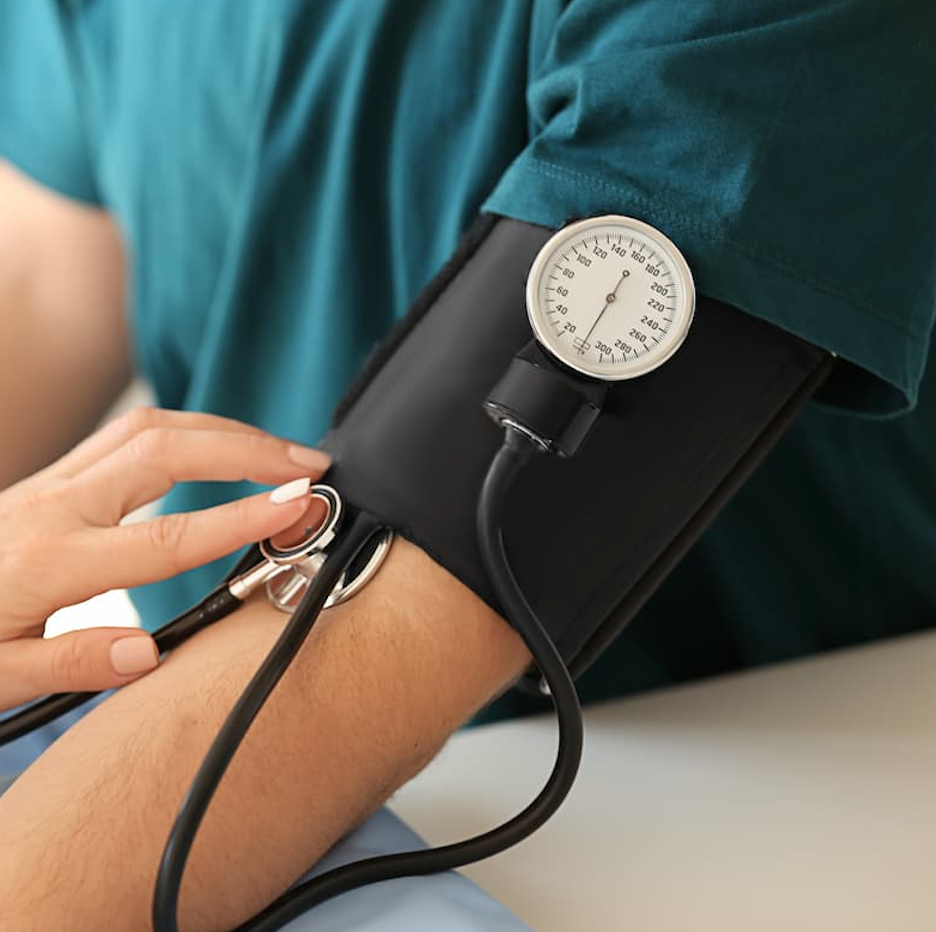How Arm Position Affects Blood Pressure Readings and Diagnosis
Inaccurate blood pressure readings from improper arm positioning could cause overestimation of hypertension, leading to unnecessary or inappropriate treatments.
By
Lana Pine
| Published on October 8, 2024
4 min read
Credit: Adobe Stock/Pixel-Shot

Commonly used, nonstandard arm positions—such as resting on the lap or leaving the arm unsupported—during blood pressure (BP) measurement resulted in significantly higher readings compared with the recommended position with arm support at heart level. This overestimation, investigators warn, could lead to misdiagnosis and inappropriate treatment of hypertension.
Globally, hypertension is the leading cause of cardiovascular disease and preventable mortality. Therefore, accurate BP measurement is crucial for both the diagnosis and management of hypertension. Clinical guidelines encourage steps for accurate BP measurement, including sitting with the feet flat on the floor with legs uncrossed, choosing an appropriate cuff size, ensuring back support and using the appropriate arm position, which is midcuff positioned at heart level with the arm supported by either a desk or table. However, the proper arm position is often overlooked in practice.
“In the United States, BP is often measured with patients seated on an examination table without any arm support or with inadequate support (eg, resting on their lap or supported by health care professionals holding the patient’s arm),” wrote a team of investigators led by Hairong Liu, MHS, data coordinator Welch Center for Prevention, Epidemiology, and Clinical Research at Johns Hopkins University. “Few studies have rigorously evaluated the effects of arm position on BP.”
To understand the effect of different arm positions on BP readings, the crossover clinical trial enrolled 133 adults between August 2022 and June 2023. Self-reported data included age, sex, race and ethnicity, weight and a medical history of hypertension, diabetes, chronic kidney disease and myocardial infarction. The use of antihypertensive medication and health care utilization within the past year was also noted.
Patients were randomized to receive triplicate BP measurements of the arm, four times, positioned in one of three ways:
- Supported on a desk (the control measurement)
- Hand supported on lap
- Arm unsupported at the side
The primary endpoints were differences in mean systolic BP and diastolic BP between the control measurement and the two arm support positions. Subgroup analysis determined any differences in outcomes based on age (≥60 years vs <60 years), obesity status, hypertensive status and the patient’s access to health care within the past year.
Enrolled patients had a mean age of 57 years, 53% were female, 41% had a body mass index (BMI) of >30 and 36% had a systolic BP of 130 mm Hg or higher. Health care utilization (82%) was high among this cohort.
Results revealed that supporting the arm on the lap overestimated systolic BP by 3.9 mm Hg and diastolic BP by 4.0 mm Hg. Additionally, positioning the arm unsupported at the side overestimated systolic BP by 6.5 mm Hg and diastolic BP by 4.4 mm Hg.
Investigators believe this discrepancy is due to a combination of factors, including a lack of awareness among health care professionals about the effect of arm position on accurate measurement and limitations in resources, training and equipment.
Based on data from the National Health and Nutrition Examination Survey, this means approximately 16% of adults could be misclassified as hypertensive due to improper arm position when using a systolic BP cutoff of 140 mm Hg and higher, and 22% could be misclassified when using a cutoff of 130 mm Hg and higher.
Investigators noted some of the subgroups were relatively small, leading them to encourage careful interpretation of the findings.
“This crossover randomized clinical trial shows that not adhering to the guideline-recommended arm position and support during BP measurement can result in overestimation of BP by 4 to 10 mm Hg,” investigators concluded. “This degree of BP error could lead to a substantial number of people being overdiagnosed with hypertension.”

